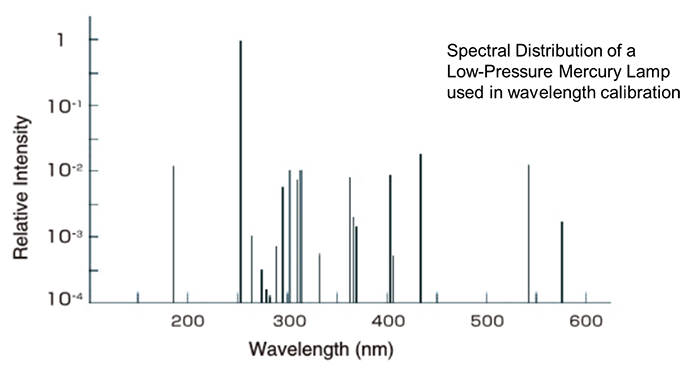What does a low-pressure mercury lamp do?

The low-pressure mercury lamp is a discharge lamp designed to have a low mercury vapor pressure (100 Pa max.) when lit to efficiently emit the mercury resonance lines (254 nm or 185 nm). The figure here shows the spectral distribution of a low-pressure mercury lamp. Low-pressure mercury lamps are available in versions that use the emitted ultraviolet lights directly, or as so-called fluorescent lamps that use a fluorescent material to convert the wavelength to a different wavelength.
A spectrophotometer uses the mercury emission lines to calibrate the displayed wavelength values. The 254 nm, 365 nm, 436 nm, or 546 nm emission lines can be used for the calibration, but care is required with the slit width (spectral bandwidth) used during measurements. For example, as the 365 nm emission line is a triple line (three emission lines in proximity), the spectral bandwidth must be 0.5 nm max. to accurately measure the respective emission lines.


